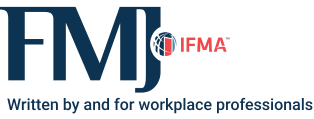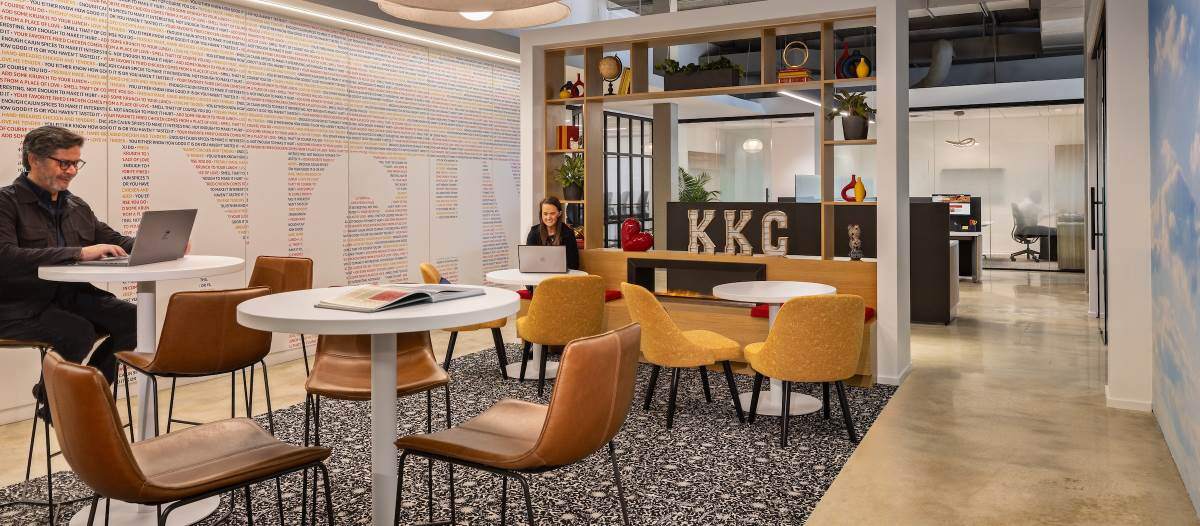Now Trending
Shaping the future of FM

Facility management is a profession that has witnessed tremendous flux in recent times. The digital revolution, robotics, changing demographics, the COVID-19 pandemic, the changing nature of work itself - all these trends have had an impact on FM professionals.
FM has become a far more complex and sophisticated industry, requiring professionals that are versatile, flexible and quick to learn.
All the more reason for FM professionals to be proactive about future trends that may shape their industry. Doing so should help to diminish the fear or uncertainty one might have about their chosen industry and, in turn, career.
Trend 1: Sustainability | Smart Growth
Sustainable development is no longer the nice-to-have option for businesses. Instead, sustainability, and smart growth, rather than growth for the sake of growth, will grow exponentially as a core business objective and focus.
Deloitte has quoted a study of 12 of the largest multinational manufacturing companies that prioritized sustainability and found they all saved millions of dollars in doing so. One company in the study increased its emphasis on sustainable manufacturing by 40 percent and was able to save US$7 billion in production costs over a 15-year period.
Allied to sustainability initiatives will be climate change or carbon management, which will mature with greater responsibilities for companies and entities across all sectors. In July 2021, Apple declared that it was committed to attaining 100 percent carbon neutrality for its entire supply chain and product range by 2030.
That came six months after Microsoft had declared its intent to be carbon negative by 2030, as shown in the graph below. Furthermore, Microsoft committed to eradicating all carbon that the company had emitted since it was founded in 1975.
Any efforts by any organization regarding sustainability or, specifically, carbon management and carbon neutrality, will affect FM function. For example, a carbon-related mandate on electricity usage/efficiency in all buildings will need to be planned and overseen with the direct input of FM.
For greater context, PR Newswire projected that the market for smart buildings, which is predominantly sustainability-driven, will reach US$141.71 billion in the U.S. alone by 2028.
Key takeaway: Sustainable FM will become the norm.
Trend 2: Big Data | Artificial Intelligence
Big data and data management will become even more important as FM becomes more data-centric and digitized. Artificial intelligence (AI) is embedded in all the smartest data-related solutions today. Research and consulting firm Frost & Sullivan notes how AI-powered data solutions that include analytics of massive amounts of data are already assisting FM, often with the use of smart sensors or meters.
This technology can provide operational optimization that includes detection of pending power outages or equipment failure, as well as smart building management. This potential will continue to grow, as data systems become significantly smarter by being increasingly based on self-teaching machine learning (ML) networks.
The U.K.’s Institute of Workplace and Facilities Management (IWFM) stresses how the Internet of Things (IoT) will greatly shape FM in the near future. IoT can be defined as the entire network of physical devices and objects that are embedded with digital software, sensors and network connectivity that enable all devices and objects to exchange data and effectively communicate with each other.
IoT will increasingly facilitate a host of FM functions, such as maintenance, asset management, tracking, illumination/lighting, heating, ventilation and air conditioning (HVAC), fire suppression, energy consumption, security, inventory management and equipment monitoring, to name a few.
Emerging technologies of today as the norms of tomorrow
IoT devices will also greatly improve what is referred to by IoT for All as the "holy grail of FM,” namely predictive maintenance. As devices on machinery and equipment can better communicate with each other, they too will be able to raise alerts about potential faults or breakdowns before they happen. This form of automatic fault triggering will ensure that maintenance can become fully integrated and truly predictive.
Augmented reality (AR) FM in the form of app-based 3D visualizations, such as for on-location maintenance, will also increasingly be used in conjunction with IoT devices. For remote maintenance work, the digital twin of a given building, facility or machinery will be possible with AR, allowing for intricate maintenance tasks to be undertaken without the worker having to be physically at a location.
Key takeaway: The emerging technologies of today will be the norms of tomorrow, with resultant influences on FM.
Trend 3: Automation | Robotics
Automation will be another paradigm-changing factor in lockstep with technological advances such as AI, ML and IoT. There will be a host of different types of robots and automation that could be used by facility professionals. One such robot will be the autonomous mobile robot, or AMR, which stands out for its navigational capabilities. These robots, along with automated guided vehicles or AGVs, are distinct in their ability to do advanced facility mapping, courtesy of their navigation software. Viable, logical routes are based on this mapping and are for now primarily used for tasks related to warehousing and logistics.
Factory of the future
Looking forward, as with all AI-related and allied smart technology, this type of robotics is an evolving technology. It will shape the so-called factory of the future and what is known as mass customization, whereby mass production will allow for customized products to be manufactured.
No longer will mass production mean that all product lines need to be identical. By being fully autonomous, AMRs and AGVs will continue to revolutionize mass production and mass warehousing, thereby optimizing just-in-time delivery quotas. FMs will have to adapt and implement custom material handling solutions for facilities they manage.
These changes in how work is done on production floors or in warehouses due to increased, evolving automation will mean changes in space planning, asset management and maintenance demands for FM teams. This will be equally true of increasingly automated cleaning systems on a greater and more sophisticated scale. In turn, centralized, " robotic software platforms will allow facility managers to manage multiple, integrated robotic applications throughout a facility, regardless of manufacturer or machinery type.
Key takeaway: Increasingly intelligent, multitask automation will alter traditional aspects of facility management.
Trend 4: Demographics | Labor
FM’s current skills gap will almost certainly continue for the foreseeable future. For one thing, there is an ongoing labor shortage. A 2021 McMorrow report found that 72 percent of U.S. FMs cannot find people with the right technical and/or managerial skills for the work needed.
Furthermore, an ARC report found that 40 percent of FM professionals will retire as early as 2026. That will surely exacerbate the skills gap, particularly in terms of management-level expertise.
Labor shortage problems
The negative news is that younger generations – Millennials (roughly those born between 1982 and 2000) and Generation Z (those born from 2000 to about 2020) – are not entering the industry in encouraging numbers. Bottom line: FM is simply not attractive enough for generations brought up on smartphones, social media and instant gratification.
The better news is that millennials, for example, many of whom are already close to or at management age, are uniquely poised to be entirely comfortable with the turmoil and fast-evolving nature of emerging technologies, as well as evolutions in work life and the workplace. That was the finding of a CBRE study. These traits should bode well for the greater flexibility and technological agility that will be required of FM professionals.
Greater outsourcing
Another future that is already taking hold will be that of greater outsourcing, which will become increasingly necessary and will allow in-house FM teams to concentrate on core functions. This will result in a diverse range of hybrid outsourcing models and choices, such as bundled or single-service outsourced services.
This will become normative as more companies move away from having in-house teams manage legacy facility functions such as building repairs and maintenance, furniture moves, window cleaning, landscaping, painting, janitorial tasks, electrical maintenance, installation and carpentry.
Key takeaway: Demographic factors and a greater emphasis on core FM functions will shape the industry in different ways.
Trend 5: Employee wellness | The future of work
There will be an even greater emphasis on wellness and allied resources for employees in the workplaces of the future, a trend that was accelerated with the advent of the COVID-19 pandemic.
Leadership strategist Jeanne Meister quoted a Future Workplace 2021 HR Sentiment survey that found that 68 percent of senior HR leaders believed that employee well-being and mental health would be a top priority in the 2020s. Unsurprisingly, the corporate wellness-related market is forecast to grow to US$87.4 billion by 2026.
Free online counseling sessions, training leaders on empathic leadership, and meditation apps have become increasingly popular across many sectors, with an emphasis on holistic employee well-being.
Workers will be more demanding
Employees will no doubt be more demanding of soft/personal incentives and packages by companies, as well as feeling safer and more secure in their workplace, an upward trend that will have profound impacts on FM in terms of flexible, hybrid and other forms of alternative work.
These will continue to grow in popularity and stature, meaning FMs must be far more creative and flexible with how spaces are used. Optimal space management will become a key aspect of FM work.
Occupational hygiene factors will also be increasingly important. Workers have become far more demanding of these factors as a result of the pandemic, be it about the cleanliness of contact surfaces and social distancing requirements, to indoor air quality (IAQ) and temperature controls. These will clearly be within the domain of the in-house FM department, or as part of an outsourced function over which in-house oversight is still required.
There will even be a proliferation of “Workplace Environment Architects,” as named and listed by the World Economic Forum (WEF) in May 2021 as one of its 10 Jobs of the Future. The WEF believes that these workplace architects will be in demand as leaders and corporates realize that the human-centered design of the built environment can impact employee wellness and will be crucial to the future of work.
Add to that other futurist jobs such as work-from-home facilitator and human-machine teaming manager, or fitness commitment counsellor and algorithm bias auditor, and one can begin to grasp just how formidable the paradigm shift will be in the near future regarding the world of work.
Key takeaway: As the world of work and the future of workplaces change dramatically, so will the role of FM professionals.
Wrapping up
A sobering possibility needs to be considered: Rapidly evolving technology and paradigm shifts in how people work, with an allied rise in flexible workplaces and less need for large, fixed premises, could mean the eventual decline or even demise of FM in some sectors. That sounds like an extreme and overly pessimistic notion, but it will certainly be a brave new world for the industry.
As such, flexibility and adaptation by the industry and its professionals will be key for survival and growth. As the saying goes, “forewarned is forearmed.”
Playwright and philosopher George Bernard Shaw said: “The reasonable man adapts himself to the world; the unreasonable one persists in trying to adapt the world to himself. Therefore, all progress depends on the unreasonable man.” Substitute the word “unreasonable” for the word “brave” or “ambitious” and that quote is tailor-made for the future FM professional.

Luke Goodwin is CMO at FlexQube and an experienced marketing manager with a demonstrated history of working in the logistics and supply chain industry.
References
blogs.microsoft.com/blog/2020/01/16/microsoft-will-be-carbon-negative-by-2030/
niras.com/insights/sustainable-facility-management-benefits-both-brain-and-heart/
fmlink.com/articles/unlocking-the-role-of-big-data-in-facilities-management/
iotforall.com/how-iot-transforms-facilities-management-processes
flexqube.com/news/the-basics-of-amr-robots/
flexqube.com/news/importance-custom-material-handling-carts/
us.softbankrobotics.com/blog/how-technology-is-driving-the-future-of-facilities-management
twinfm.com/article/four-ways-robots-are-helping-to-address-facilities-management-challenges
spaceiq.com/blog/facilities-management-and-millennials/
blueskyre.com/fm-outsourcing-hybrid-model/
forbes.com/sites/jeannemeister/2021/08/04/the-future-of-work-is-worker-well-being/
Read more on Workplace , Emerging Topics and Leadership & Strategy or related topics Workforce Development and Facility Technology
Explore All FMJ Topics









